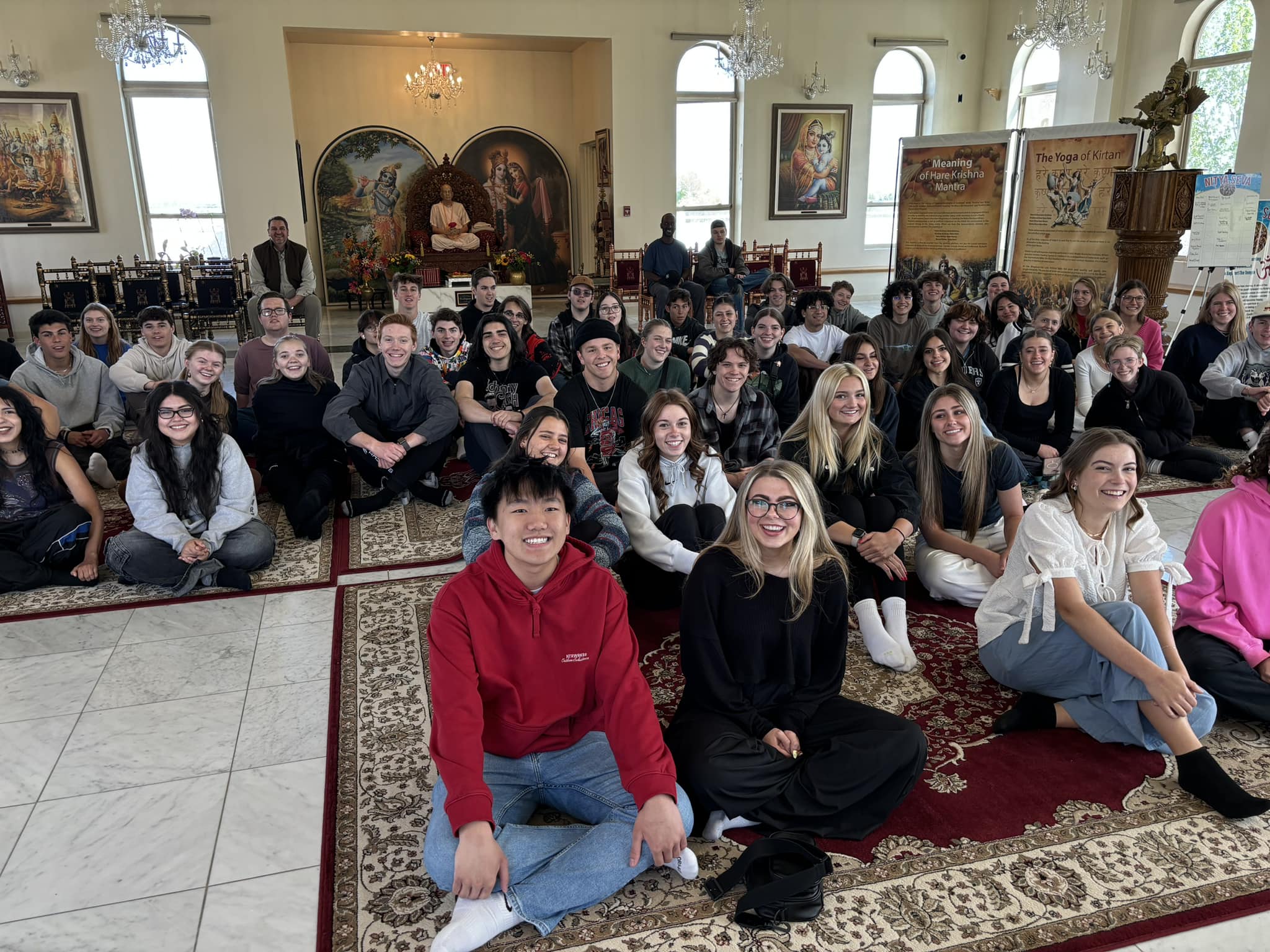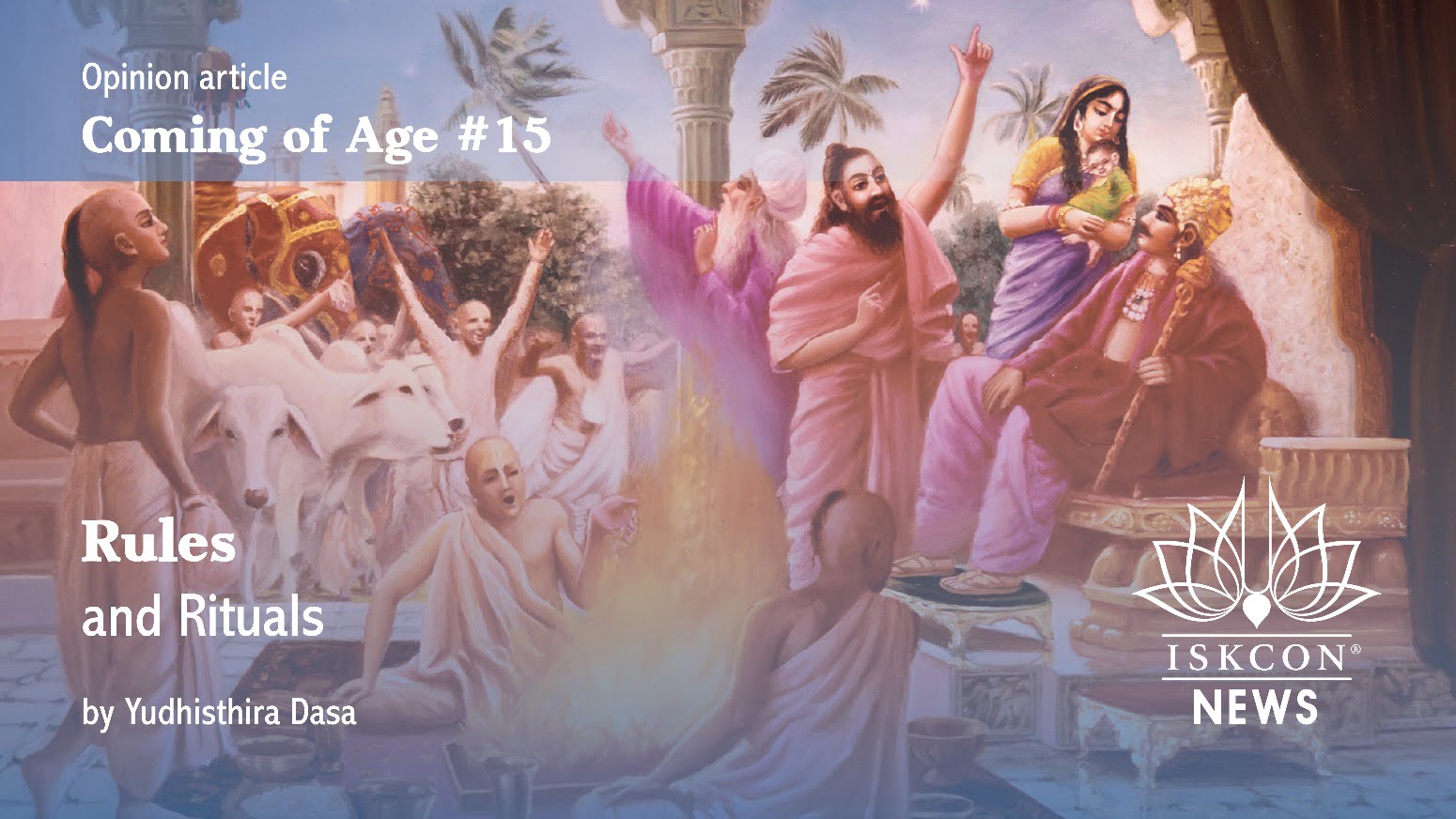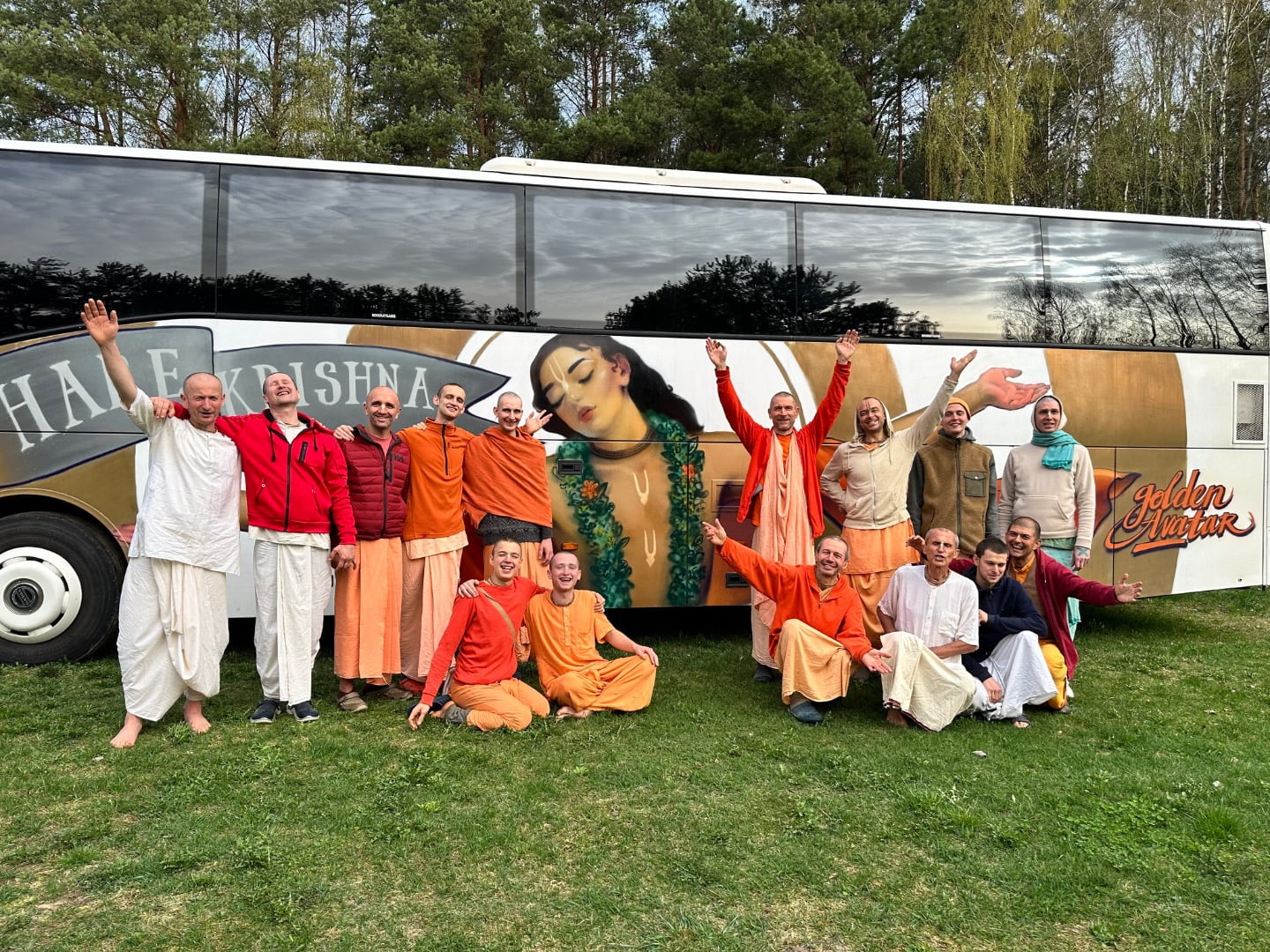Chant and Be Happy
By Geoff Wood - ABC Radio National | May 04, 2007

MAHAMANTRA
The following article written by Geoff Wood was posted on the ABC Radio National’s Rhythm Divine Web Site 24 January 2007. It is good to know that the Maha Mantra continues to reach more and more people across the airwaves every day.
TRANSCRIPT:
“I’m sure you’ve seen them at one time or another, young westerners dressed in robes, heads shaved, dancing and chanting their way through the streets. Of course they’re the Hare Krishnas and the chant we just heard was the maha mantra or great mantra, which is a repetition of the holy names of Krishna.
Many people consider the Hare Krishna movement or ISKCON to be part of the wide religious category of Hinduism. However, the Hare Krishnas themselves prefer to be described as belonging to the Gaudiya Vaisnava tradition, a devotional tradition based on the teachings of Bhagavad-gita and Srimad-Bhagavatam.
According to the official ISKCON website, ‘Gaudiya Vaisnavas are monotheists and know the personality of Godhead as Krishna, the All-attractive. But it is also recognised that the Supreme has unlimited names such as Rama, Buddha, Vishnu, Jehovah, Allah, etc. The ultimate goal of Gaudiya Vaisnavism is to develop a loving relationship with the Supreme Godhead.’
The Gaudiya or Bengali Vaisnavas (originally centred around Bengal, Orissa, and Vrndavana but now found worldwide) are a bhakti or devotional movement established 500 years ago by Saint Caitanya. They revere the teachings of Caitanya and focus their devotion on Krsna and Radha. Vaishnavism however has existed for thousands of years.
It was this lineage of the Gaudiya Vaisnava tradition which Srila Prabhupada brought to West in 1966,and which became known as the Hare Krishna movement. Their formal name is the International Society for Krishna Consciousness or ISKCON.
The recording we just heard was made by a group of young devotees I found chanting in the streets of Fortitude Valley in Brisbane recently.
Leading the chanting there is Candramukhi Dasi and she explained to me that the music is known as kirtan, praise music. And the instruments usually include the mrdanga, a double-headed drum which we heard, karatalas, hand cymbals and a harmonium or hand organ. Or these days it’s more likely to be electronic keyboards.
The melodies are often traditional ones, but they can also be improvised.
The important part is the mantra which in both Hinduism and Buddhism is considered to be a transcendental sound, one that awakens the love of God in those who chant and in those who listen.
So now, let’s hear the maha mantra sung by the man who’s probably the most famous Western convert to the Hare Krishna movement, George Harrison.
Eastern religions had a huge impact on pop music in the 1960s and the Beatles were right at the front of this, famously hanging out in India with the Maharishi Mahesh Yogi.
But while most only dabbled in religion, George Harrison became a life-long convert to the Hare Krishnas, calling himself a ‘plainclothes devotee.’ Over the years he wrote a number of devotional or religiously-inspired songs like ‘Art of Dying’, ‘Waiting on You All’ and most famously ‘My Sweet Lord’ which he recorded for the 1970 triple album All Things Must Pass.
According to George he wrote MSW to show that Halleluja and Hare Krishna were quite the same thing.
MY SWEET LORD
George Harrison and friends with ‘My Sweet Lord’ from the 1970 album All Things Must Pass. It was George’s first proper solo album following the break-up of the Beatles, and was massively successful, selling in the millions. Both the song and the album topped the UK charts.
With ‘My Sweet Lord’, George wanted to make a Western pop equivalentt of a mantra, and I think he did that pretty well, using the Hare Krishna maha mantra, to chant the holy names of God.
Ironically, George Harrison was subsequently sued for copyright infrigement when it was alleged he used the melody of a song by the group the Chiffons, ‘He’s So Fine’…but that’s a whole other story…”
To see the full article visit The Rhthym Divine
http://www.abc.net.au/rn/rhythmdivine/stories/2007/1813971.htm














